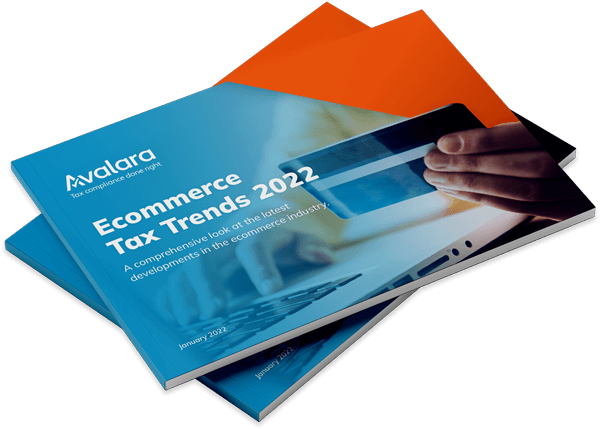
How to optimise your ecommerce website
Providing a streamlined ecommerce experience benefits both your customers and your business. Through ecommerce website optimisation, you can improve consumer satisfaction and increase both retention and loyalty among customers. Optimising the more business-focused elements of your ecommerce website, like the collection of tax and inventory management, means significantly less disruption to your operations.
But what does optimisation really mean, and how do you get started? In this article, we’ll look at what you can do to improve your ecommerce website.
Creating a high-quality customer experience
The importance of the ecommerce post-purchase experience
While many businesses focus on sales-based aspects of ecommerce website optimisation such as product pages and the checkout process, the ecommerce post-purchase experience (i.e., order processing and delivery) is just as important. Good shipping management should be a priority for any company trading across borders.
The post-purchase stage is an area where few businesses have a great record. According to Metapack’s post-purchase experience report, a staggering 93.5% of shoppers have had a bad post-purchase experience in the last 12 months. Of these, 40.6% have bad experiences somewhat regularly, and 6.5% have them frequently.
Ensuring timely and effective delivery is crucial in avoiding these bad experiences, and while some of the responsibility lies with your courier, a little ecommerce website optimisation can go a long way. For instance, connecting your site to a delivery management tool (such as Metapack) can help automatically select the best delivery option for your customer, streamlining the shipping process.
Additionally, the ecommerce post purchase experience can go poorly if a retailer isn’t prepared for the complexities of international commerce. A common hurdle for many industries is dealing with international customs and finding the right way to charge customs duties to customers.
DDP vs DAP
Passing customs duties onto the customer (i.e. charging duties at the checkout page) is referred to as DDP (Delivery Duty Paid). As well as customs duties, DDP means the final price a customer pays includes all relevant taxes while on your website.
To prevent hidden fees, businesses should ensure their sales are DDP instead of DAP. DAP (Delivered At Place) means import charges and duties are not included, and the customer must pay these fees upon delivery. Overwhelmingly, customers prefer DDP, with 96% saying they’d be put off buying a product if they couldn’t view the final price.
Implementing DDP is a vital part of optimising your ecommerce website. For more information, you can check out our dedicated DDP vs DAP guide here.
Using the correct HS codes
Another core part of providing an excellent ecommerce post-purchase experience for customers is the application of the correct Harmonised System (HS) tariff codes.
HS codes are applied to any sold product you’re shipping internationally, but each type of product uses a different code. Using the correct code is crucial, as using the wrong one means the maximum amount of customs duty will be charged for the import of the item. The cost will likely be passed on to the customer, which means the price charged at checkout is no longer accurate. Such confusion is likely to create unhappy customers.
Using technology to optimise your website
The benefits of ecommerce platforms
While optimisation can be fairly technical if you’ve built your website yourself from scratch, using an existing ecommerce platform as a basis for your site can massively simplify things. This simplicity is one of the key benefits of ecommerce platforms.
For instance, if you use a platform like Shopify or Adobe Commerce, it’s much easier to optimise your website for mobile devices or expand the payment options you accept. While it’s not as technical or sales-focused, another benefit of ecommerce platforms is how easy it is to create an attractive design for your website — even if you lack design experience.
The power of integrations
A common challenge during ecommerce website optimisation is the integration of new technology, particularly if you already have a complicated web of software. When you’re looking for digital solutions that can help scale your business, it’s best to prioritise those with a wide range of integrations, so you can utilise its features without compromising your existing system.
As we mention above, using an ecommerce platform to build your website can help simplify this sort of optimisation. For example, Avalara’s AvaTax technology is compatible with the most popular ecommerce platforms, meaning you can leverage the functionality of tax calculation regardless of your existing tech stack.
Metapack, which we also mention above, is another helpful integration. Metapack’s delivery manager can facilitate efficient delivery regardless of where customers are ordering from, as the delivery manager will select the best shipping option.
For a company looking to scale their business across borders, integrations that automate the complications of international trade (e.g. customs, different tax rates, international delivery, language translations) are crucial.
Working with Avalara to provide the optimal experience
Interested in ecommerce website optimisation? With Avalara’s support and advice, you can discover exactly how to create a perfect ecommerce experience for your customers. Doing so is a vital part of scaling up your company to an international level.
For more tips on improving your website and cross-border ecommerce, download our new whitepaper: Scaling Up Your Retail Business. It provides a comprehensive guide on optimisation, with a particular focus on trading abroad.
If you’d like to contact one of experts directly for reliable tax advice and guidance on using our software, click here to get in touch.
Ecommerce Tax Trends Report 2022
Get a comprehensive look at the latest developments in the ecommerce industry.

Stay up to date
Sign up today for our free newsletter and receive the latest indirect tax updates impacting businesses selling internationally straight to your inbox.



